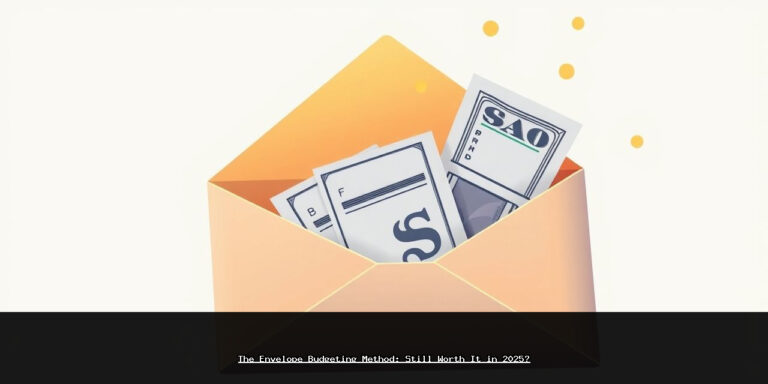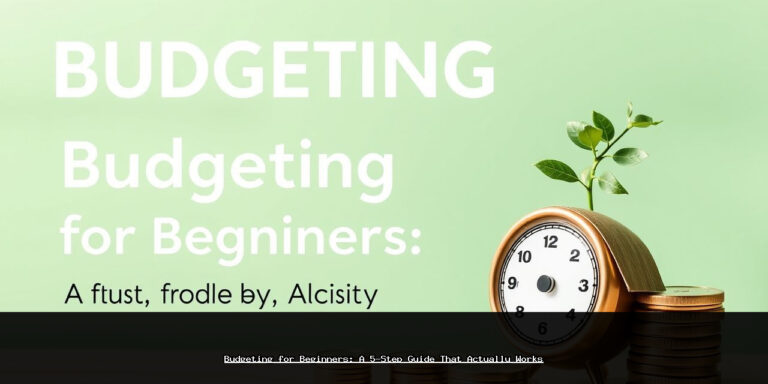How to Create a Monthly Budget That Feels Like Freedom, Not a Chore
Table of Contents
- Why Most Budgets Fail (And How to Make Yours Work)
- The 3 Budgeting Mistakes That Kill Motivation
- Step 1: The “Big Three” Framework (What Actually Matters)
- Action Step:
- Step 2: The 50/30/20 Rule (Simplified)
- Step 3: Automate the Boring Stuff
- Step 4: Build in “Guilt-Free” Spending
- Step 5: The Weekly 5-Minute Check-In
- Real-World Example: Sarah’s Budget Makeover
- Conclusion: Budgeting as a Tool, Not a Task
“`html
How to Create a Monthly Budget That Feels Like Freedom, Not a Chore
Meta Title: Budgeting for Freedom – A Stress-Free Monthly Plan
Meta Description: Learn how to create a flexible monthly budget that reduces stress, not fun. Real-world strategies to take control of your money.
Why Most Budgets Fail (And How to Make Yours Work)
Budgeting has a bad reputation. For many people, the word conjures images of spreadsheets, guilt over spending, and the feeling of being trapped. Yet, the real purpose of a budget isn’t restriction—it’s control and freedom.
According to a 2020 NBER study, people who budget consistently report lower financial stress and greater confidence in their future. But here’s the problem: only 32% of Americans maintain a detailed household budget (source: Gallup). Why? Because most approaches are rigid, complicated, or disconnected from real life.
The 3 Budgeting Mistakes That Kill Motivation
- Overcomplicating it: 50-line spreadsheets are unsustainable for most.
- Ignoring psychology: If it feels like punishment, you’ll quit.
- No flexibility: Life changes—your budget should too.
Step 1: The “Big Three” Framework (What Actually Matters)
Forget tracking every coffee. Start with the three categories that dictate 80% of financial outcomes:
- Essential Fixed Costs: Rent, utilities, minimum debt payments.
- Essential Variables: Groceries, gas, healthcare.
- True Discretionary: Dining out, hobbies, vacations.
Case Study: A CNBC report found that reducing fixed costs (like refinancing a mortgage) had 4x the impact of cutting daily Starbucks runs.
Action Step:
Calculate last month’s spending in these three buckets using bank statements. Most people discover:
- Fixed costs are higher than expected
- Small “miscellaneous” purchases add up fast
Step 2: The 50/30/20 Rule (Simplified)
Popularized by Elizabeth Warren, this framework suggests:
- 50% on needs
- 30% on wants
- 20% on savings/debt
But here’s the hack: Adjust percentages based on your goals. A freelancer might do 45/25/30 for lean months. The key is intentional allocation—not rigid perfection.
Step 3: Automate the Boring Stuff
Behavioral research shows automation increases follow-through by 300% (source: NIH). Set up:
- Auto-transfers to savings on payday
- Bill pay for fixed expenses
- Round-up apps like Acorns for painless investing
Step 4: Build in “Guilt-Free” Spending
A University of Michigan study found that people who allocated 10-15% of income to “fun money” stuck to budgets longer. Label this clearly—e.g., “$200/month for concerts.”
Step 5: The Weekly 5-Minute Check-In
Instead of monthly marathons:
- Quickly log into your banking app
- Check if you’re on track with the Big Three
- Adjust next week’s spending if needed
Real-World Example: Sarah’s Budget Makeover
Sarah, a teacher, hated budgeting until she:
- Negotiated her internet bill (saved $30/month)
- Automated a $100 weekly transfer to savings
- Created a “travel fund” category instead of cutting vacations entirely
Result? She saved $5,000 in a year without feeling deprived.
Conclusion: Budgeting as a Tool, Not a Task
A great budget doesn’t limit your life—it funds the life you want. By focusing on high-impact categories, building flexibility, and leveraging automation, you create a system that works for you. Start small, iterate often, and remember: the goal isn’t perfect numbers, but peace of mind.
“`






